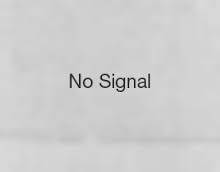Western blot: No signal…
Perhaps the biggest and most frustrating issue with a western blot is when you’ve finished everything, and…there’s nothing. No signal at all.

It can be a difficult problem to solve, since at almost any stage of the protocol something could have gone awry to mean that, at the end, there’s simply no signal. Leaving you with no idea at which stage it happened.
Fortunately (for you…), we’ve been there. And we’ve developed a basic troubleshooting guide to help you get to the bottom of the problem.
As we always recommend when repeating an experiment, do try to start again with fresh buffers and reagents in the event that a buffer or reagent in the previous experiment was accidently prepared incorrectly, had become contaminated, or was too old.
Secondary antibody
As a first port of call, double check that the primary and secondary antibodies used are compatible. If you're lucky it will be that they aren't compatible as it means your work may not have been wasted and you may be able to repeat your incubation with the secondary antibody. For example, using a mouse primary antibody and an anti-goat secondary antibody would mean no secondary antibody binding and no signal. Also, as a note, avoid using sodium azide with any HRP-conjugated antibodies, as it’s an irreversible inhibitor of HRP.
Primary antibody
If the manufacturer doesn’t list your protein species, the antibody may not cross react. While running a positive control should help to rule this out, it’s worth double checking the data sheet or manufacturers website if your sample is from a different species. A BLAST search can always help to determine if your protein and the antibody should cross-react. Though it’ not always a guarantee.
Inactive substrate
Check the age and storage conditions of your substrate, it could be that it’s gone off. Also, make sure you’re giving the substrate enough time to develop. Double check the manufactures instructions.
Transfer to membrane
No transfer = no protein = no signal. You can use Ponceau S, which reversibly stains proteins on western blots, to check how well the transfer has gone. If there’s nothing there, check that the transfer wasn’t performed back-to-front. Make sure that the sandwich is constructed correctly and that there is good contact between the gel and membrane (no air bubbles). Some membrane may need to be ‘activated’ first, such as PVDF which requires a soak in methanol before use.
Not enough antigen I
If your positive control worked, but there are no bands in your sample lanes, it’s possible that there wasn’t enough protein loaded in to the wells, or that the protein you’re interested in isn’t very abundant in the tissue type your using. Measure the protein content of your samples (aiming for about 20–30 μg per lane) or try using a protein enrichment step.
Not enough antigen II
If you have enough protein, but not enough antigen then proteases could be your problem here, and protease inhibitors your solution.
Over washing
Try using fewer or reduced time washing steps to prevent washing your protein away. Again, the presence of the positive control should help rule this once out.
Over run
Double check your gel run times, voltages and buffers to make sure they are appropriate for the protein you’re interested in.
Conclusion for no signal on your WB
With any complex procedure, like a western blot, there are myriad things which could go wrong, so we hope that this list of some of the most common problems for a lack of signal give you some useful tips for what to look for should you be unfortunate enough to need them.
Download PDF :  Filed Under : Antibodies
Tagged With : Western Blot
Filed Under : Antibodies
Tagged With : Western Blot

 It can be a difficult problem to solve, since at almost any stage of the protocol something could have gone awry to mean that, at the end, there’s simply no signal. Leaving you with no idea at which stage it happened.
Fortunately (for you…), we’ve been there. And we’ve developed a basic troubleshooting guide to help you get to the bottom of the problem.
As we always recommend when repeating an experiment, do try to start again with fresh buffers and reagents in the event that a buffer or reagent in the previous experiment was accidently prepared incorrectly, had become contaminated, or was too old.
It can be a difficult problem to solve, since at almost any stage of the protocol something could have gone awry to mean that, at the end, there’s simply no signal. Leaving you with no idea at which stage it happened.
Fortunately (for you…), we’ve been there. And we’ve developed a basic troubleshooting guide to help you get to the bottom of the problem.
As we always recommend when repeating an experiment, do try to start again with fresh buffers and reagents in the event that a buffer or reagent in the previous experiment was accidently prepared incorrectly, had become contaminated, or was too old.
 Filed Under : Antibodies
Filed Under : Antibodies


